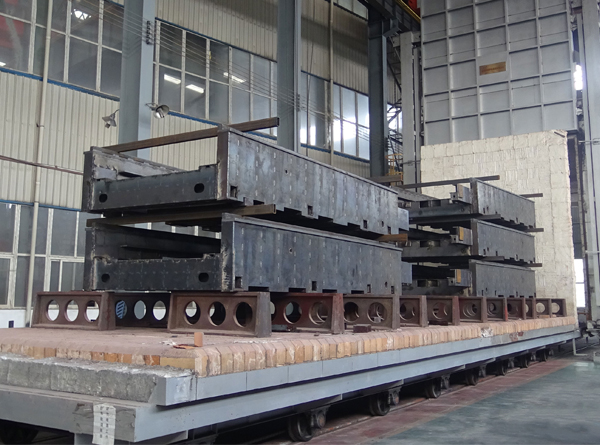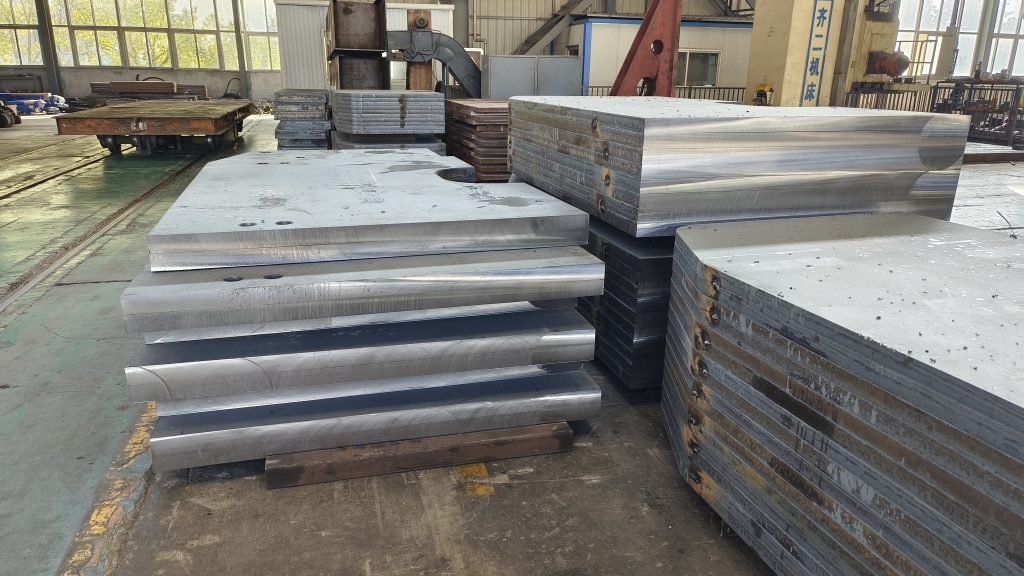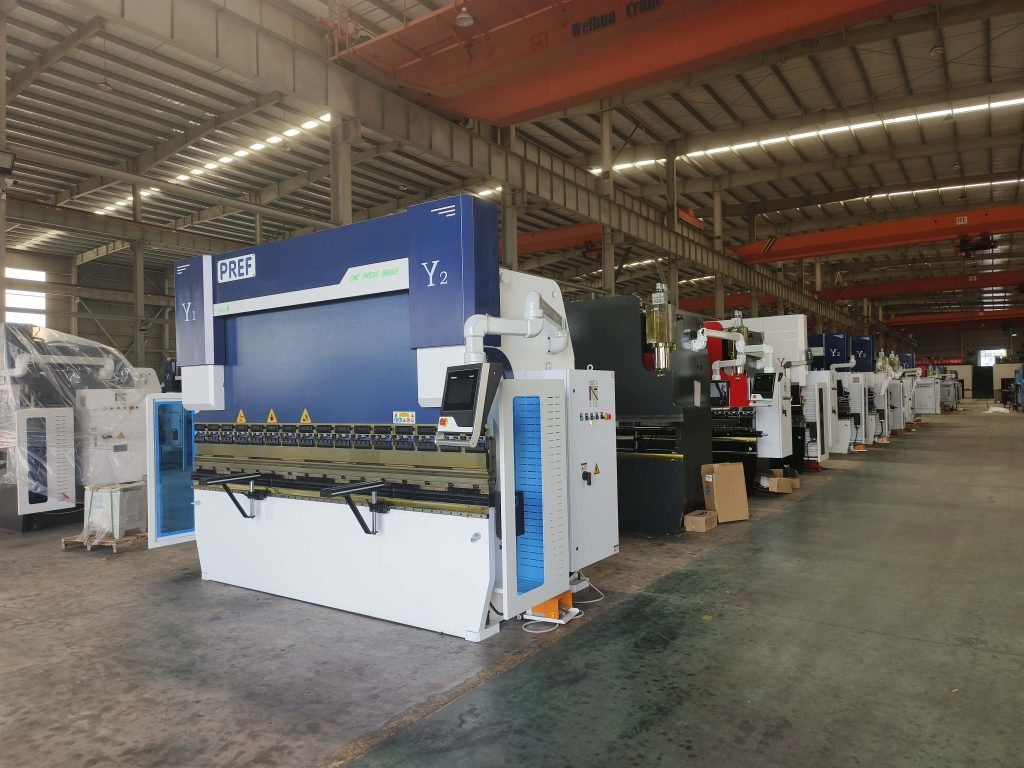اتصل بنا اليوم!+86 18055583040|admin@zymtcnc.com

اتصل بنا اليوم!+86 18055583040|admin@zymtcnc.com

In the bridge industry, the selection of bending machines needs to take into account the following factors: plate thickness, bending accuracy, production efficiency, and the type and complexity of processing. The bridge is a structural member used to support cables. It is usually made of steel plates, stainless steel plates, aluminum alloys and other materials. Therefore, it is necessary to select a suitable bending machine according to the properties of the specific materials. The following are some key criteria for selecting a bending machine:
·Steel plates and stainless steel plates: These materials are usually used to produce bridges. Because of their high strength and corrosion resistance requirements, hydraulic bending machines with high processing capabilities need to be selected.
·Aluminum alloy: Aluminum alloy is softer and is suitable for more finely controlled bending machines to avoid excessive deformation of the material.
·Galvanized steel plate: Usually used in external environments, the bending machine must have good adaptability to avoid damage to the coating.

·Bridge production usually does not require very high bending accuracy, but it is still necessary to ensure that the bending angle and size meet the standards. Especially in mass production, the stability of accuracy is particularly important.
· CNC bending machine (CNC bending machine): If high precision, batch production or complex shapes of bridges are required, CNC bending machines can provide higher precision and greater production flexibility. Especially for bridges of different models and specifications, CNC bending machines can adjust quickly and reduce mold replacement time.

· The bridge industry usually involves large-scale production, and production efficiency is a very important consideration.
· Automated bending machine: In order to improve production efficiency, you can choose a bending machine with automatic feeding, automatic angle adjustment and pressure. The automated system can reduce manual intervention and shorten the production cycle.
· Multi-station bending machine: If multiple bending operations are required, you can choose a multi-station bending machine. One machine can complete multiple bending steps and improve efficiency.

· Tonnage selection: Bridges are generally produced with thicker plates, so a larger tonnage is required to ensure the stability of the bending. According to the material and thickness of the bridge, select the appropriate hydraulic bending machine tonnage, and usually require the pressure of the bending machine to cover the maximum plate thickness range.
· Plate thickness: Choose the right bending machine tonnage to ensure that it can handle materials of different thicknesses. Generally, steel plate thicknesses of 6mm to 8mm are common, while thicker materials (such as 10mm and above) require larger tonnage.
· The bending process in the bridge industry is usually simple, and L-shaped, U-shaped and other standard shapes are common, so the die configuration of the bending machine is very important.
· General die: You can choose a standard general die, which is suitable for the production of bridges of various specifications. The die replacement is convenient and the cost is low.
· Customized die: If you produce bridges of special shapes or structures, you may need to customize the die to ensure processing accuracy.

· Machine rigidity and stability: The bridge industry requires long-term continuous production, so the rigidity and stability of the bending machine are crucial. When purchasing, make sure that the machine can work stably to reduce downtime caused by mechanical problems.
· Post-maintenance: The bridge industry often requires large-scale and long-term production, so it is crucial to choose a bending machine that is easy to maintain. Ensure that the equipment has good after-sales service and spare parts supply to reduce downtime caused by equipment failure.
· Size and space requirements: Bridge production often requires large-sized workpieces, so it is necessary to select a bending machine that can accommodate large-sized plates and ensure that the workshop space can adapt.
· Bending angle: The bending angle of the bridge is usually 90 degrees or other standard angles, so it is necessary to select equipment that can accurately control the bending angle.

· Hydraulic bending machine: Most bridge manufacturers choose hydraulic bending machines. The hydraulic system can provide stable force and is suitable for the processing of most metal materials, especially steel and stainless steel materials.
· CNC hydraulic bending machine: If the production needs are more diversified, or there are high requirements for bending accuracy and flexibility, you can consider CNC hydraulic bending machines, which can automatically adjust the bending angle and pressure to improve production efficiency and accuracy.
· Mechanical bending machine: Suitable for bridge processing with low production accuracy requirements and simple bending angles.
When choosing a bending machine, the bridge industry should consider the following aspects:
·Material properties: Choose the right type of bending machine according to the metal material used.
·Production efficiency: Choose a bending machine with automation and quick adjustment functions to improve production efficiency.
·Precision and pressure: Ensure that the bending machine can handle plates of different thicknesses and ensure stable bending accuracy.
·Machine stability and maintenance: Choose a bending machine with good stability to ensure long-term efficient production and convenient maintenance.
Reasonable selection of bending machines can effectively improve production efficiency, reduce costs, and improve product processing quality to meet the production needs of the bridge industry.